Why Japanese Melons Are So Expensive
- June 11, 2024
- 0 comment
In the world of fruit, few items command as much respect—and price—as Japanese melons, especially the revered Crown melons. In a high-end Tokyo fruit store, one might pause at the sight of a melon priced over $200, yet this is commonplace for the luxury fruit segment in Japan. But why are these melons so expensive? The answer lies in a unique combination of meticulous cultivation techniques, strict quality standards, and deep-rooted cultural significance.
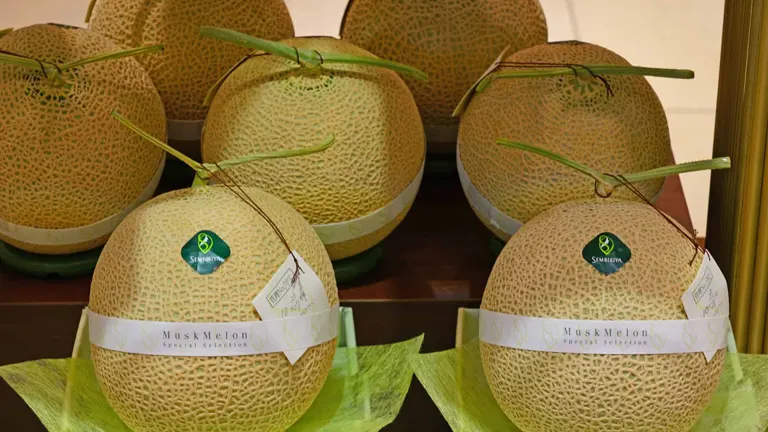
These melons are not merely consumed; they are celebrated as art, a symbol of prestige, and an integral part of Japan’s gift-giving traditions. From the precise care taken in their growth to their presentation and sale, every aspect of these melons is designed to offer not just food, but an experience, setting them apart from any ordinary fruit on the market.
The Price of Perfection
The staggering costs associated with Japanese melons can be illuminated by a remarkable event in May 2019, where two melons from Hokkaido fetched 5 million yen (over $45,000) at an auction.
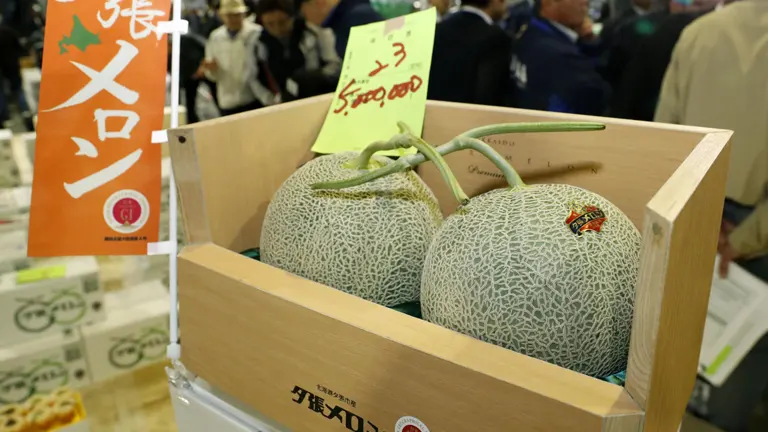
These aren’t isolated incidents but part of a broader cultural appreciation that values not just the taste but the impeccable appearance of these fruits. From the Yubari King to the Higo green melon, these fruits are cultivated with utmost dedication across Japan.
A Symbol of Luxury and Care
Unlike the common melon that might be grabbed as a quick snack in other parts of the world, in Japan, melons are a luxury item, often integral to the gift-giving culture. This isn’t just about giving a gift; it’s a deeply ingrained expression of respect, honor, and social etiquette. Crown melons, for example, are primarily grown in Shizuoka Prefecture, where they receive a level of care and attention far beyond what typical fruits receive.
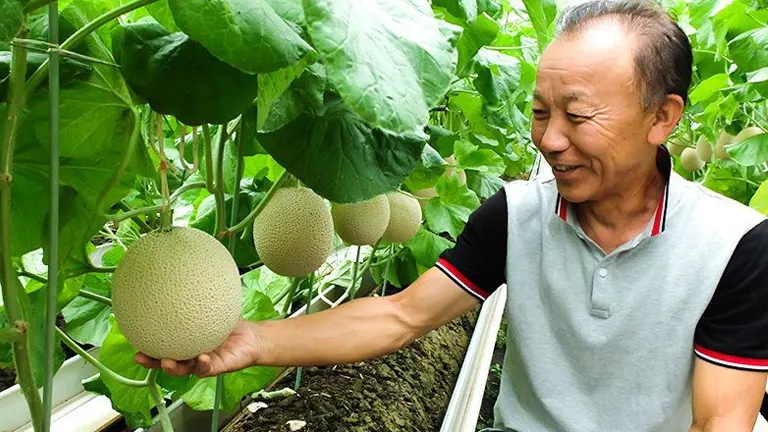
Fumiyoshi Chujyo, a farmer near Fukuroi, represents generations of farmers who have been cultivating these melons for over 60 years. Their farming technique involves precise control over every aspect of the growing process—from the selection of the seed to the climate control of the growing environment. Each melon grows from carefully selected seeds, with 20 different varieties used depending on the season. They are nurtured in raised beds that allow exact water control, in greenhouses where the temperature is meticulously managed through air conditioning and heating.
Meticulous Grading System of Crown Melons
Once Crown melons reach maturity, they are subject to an exacting grading system that underscores their uniqueness and value. This process is critical, as it directly impacts the market price and consumer perception of these luxury fruits.
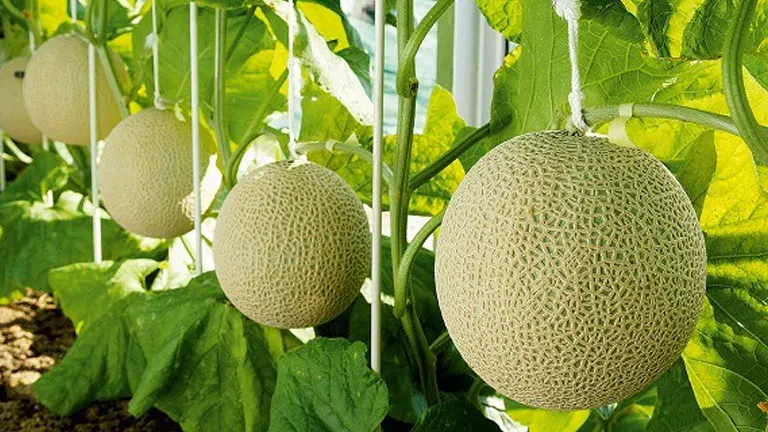
Crown melons are evaluated and classified into four distinct grades based on their sugar content and external appearance. Each grade represents a level of quality and perfection, setting the standards for pricing and prestige:
- Fuji (富士): Representing the pinnacle of quality, only 0.1% of harvested melons achieve this grade. Fuji melons must exhibit perfect symmetry, lack any cosmetic flaws, and possess an optimal sugar content that guarantees the sweetest, most flavorful experience.
- Yama (山): The second highest grade, these melons still offer exceptional quality but may have slight imperfections that prevent them from reaching Fuji status. About 25% of harvested melons fall into this category.
- Shiro (白): Shiro grade melons are of high quality, making up approximately 55% of the harvest. They are excellent in taste and appearance, though they do not meet the stringent standards of Yama and Fuji grades.
- Yuki (雪): This grade is assigned to melons that, while still good, have noticeable imperfections. These melons are typically the ones found more commonly in local markets rather than high-end fruit boutiques or auction houses.
Impact on Pricing and Market Value
The grading system is not just a measure of quality but also a determinant of the melon’s market value. Fuji grade melons, due to their rarity and superior quality, command the highest prices, often purchased by collectors or as prestigious gifts. Yama and Shiro grades also fetch high prices but are more accessible, making them popular among consumers seeking luxury without the Fuji price tag. Yuki, being the most affordable, is accessible to a broader audience, providing a taste of luxury at a more modest price.
Why the Grading Matters
This meticulous grading system ensures that consumers know exactly what they are paying for and fosters trust in the high standards of Japanese agricultural products. It also perpetuates the culture of excellence and prestige associated with Crown melons, reinforcing their status as a symbol of luxury and meticulous cultivation practices.
The Labor of Luxury
The process of growing luxury Japanese melons like the Crown melon is intensely laborious and requires precise care. About 50 days after the seeds are planted, the plants start to flower, signaling the beginning of melon growth. As the melons develop, each one is carefully wrapped in white paper. This isn’t just to protect them from damage, but also to ensure they keep a perfect, round shape. This paper wrapping is crucial for maintaining the smooth surface that makes these melons so visually appealing.
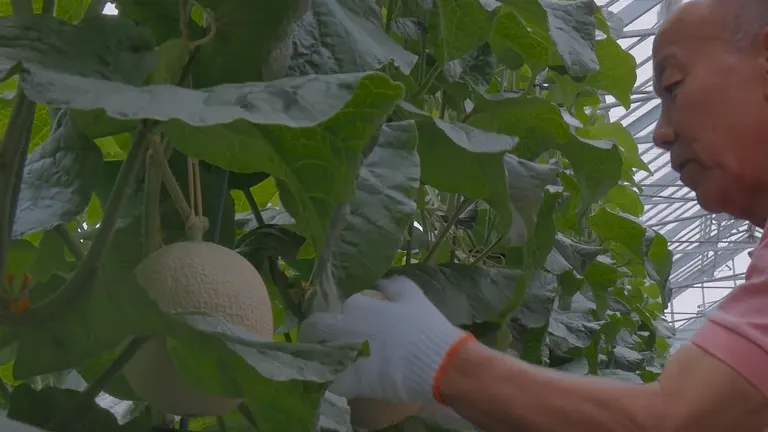
As they grow, each melon is also massaged and polished by hand. This isn’t just for looks; massaging helps spread the melon’s sugars evenly, making sure the flavor is consistent throughout. Polishing makes the melons shiny and removes any small flaws on their surface. This process is so detailed that farmers go through many pairs of gloves during a season. This intense and detailed care explains why these melons are considered luxury items and carry a high price tag.
Ensuring Excellence
Agricultural cooperatives like the Shizuoka Crown Melon Company are vital in upholding the high standards that Japanese luxury melons are known for. These organizations coordinate with over 200 farmers, ensuring that each melon meets stringent quality criteria from seed to sale. This rigorous oversight guarantees consistency and excellence, crucial for maintaining the melons’ prestigious reputation and high market prices.
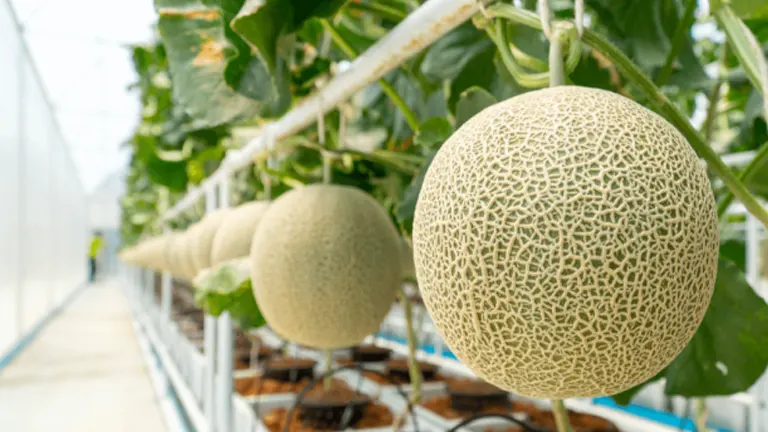
By controlling the distribution process and setting strict quality standards, these cooperatives prevent the influx of lower-quality melons that could devalue the market. This careful management helps sustain the luxury status of these fruits, ensuring that consumers continue to view them as premium products worth their high cost. Through their efforts, cooperatives like the Shizuoka Crown Melon Company ensure that these prized fruits remain symbols of agricultural artistry and luxury.
Cultural and Market Impact
Despite their hefty price tags, there is a significant market for these luxury melons across Japan. They are typically presented in exquisite boxes, adorned with silk or hay, and tied with a ribbon, emphasizing their status as the perfect gift. The high price is not just for the fruit itself but for the perfection it represents.
As the season begins, the most flawless melons are auctioned, often becoming trophies for local businesses. This practice sets new price records almost annually, reflecting a trend that shows no signs of abating.
In conclusion, Japanese melons, especially the high-end varieties like Crown melons, are much more than just fruit. They are the product of centuries of cultural practices, meticulous care, and a deep appreciation for agricultural artistry. Each melon is not just consumed; it is celebrated, making it worth every yen for those who value this unique blend of taste, beauty, and tradition.
FAQs
- Why are Japanese melons so expensive?
Japanese melons, especially varieties like Crown melons, command high prices due to their meticulous cultivation, limited supply, and cultural significance in Japan’s gift-giving traditions. Each melon receives extensive care to ensure perfect taste and appearance, contributing to their luxury status. - What makes Crown melons different from regular melons found in Western supermarkets?
Crown melons differ significantly in their cultivation process, which includes precise temperature control, manual pollination, and individual care throughout growth. This contrasts with the mass-produced melons commonly found in Western supermarkets, which are grown for volume and convenience. - How are Japanese melons graded?
Japanese melons like Crown melons are graded based on sugar content and aesthetic perfection into four categories: fuji (highest), yama, shiro, and yuki (lowest). Only a fraction (0.1%) of all harvested melons achieve the fuji grade, reflecting their flawless quality. - Can you eat a $45,000 melon, and what does it taste like?
Yes, the high-priced melons sold at auction are edible. They are celebrated for their exceptional sweetness, perfectly balanced flavors, and juicy texture, providing a unique culinary experience that justifies their cost to enthusiasts and collectors. - How long does it take to grow a Japanese luxury melon?
It typically takes about 100 days to grow a Japanese luxury melon. This period involves careful monitoring and hands-on cultivation techniques to ensure each melon develops perfectly. - Where are the most expensive Japanese melons grown?
The most prestigious and expensive Japanese melons are grown in Shizuoka Prefecture, central Japan. The region is renowned for its ideal climate and rich agricultural practices that are perfect for melon cultivation. - What is the significance of melons in Japanese culture?
In Japanese culture, melons are not just a fruit but a luxury item often used in gift-giving to convey respect and honor. They symbolize not only wealth and status but also the giver’s appreciation for the recipient’s relationship, making them highly valued during special occasions and celebrations. - Are Japanese luxury melons a good gift?
Absolutely, Japanese luxury melons are considered one of the most prestigious gifts you can offer in Japan. Their high price and exquisite presentation make them a perfect symbol of respect and esteem, ideal for important business associates, family milestones, or significant cultural events.
We’ve just explored why Japanese melons carry such hefty price tags, blending deep tradition with meticulous care. What do you think—would you splurge on a luxury melon, or do you find the prices astonishing? Drop your thoughts in the comments below and let’s chat about it! If you enjoyed this read, why not share it with your friends and spark a sweet conversation?

Emma Hudson
Forestry AuthorEmma's experience in farming shapes her detailed guides on gardening and farming tools, providing practical, actionable advice grounded in real-world experience. Her work targets both newcomers and experienced farmers, aiming to enhance their practices with a mix of traditional wisdom and modern techniques. By making complex agricultural concepts accessible, Emma's guides serve as valuable tools for those navigating the challenges of contemporary farming, offering strategies for sustainable success.










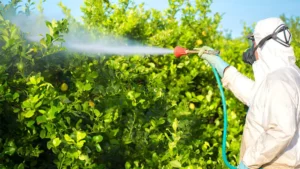


Leave your comment